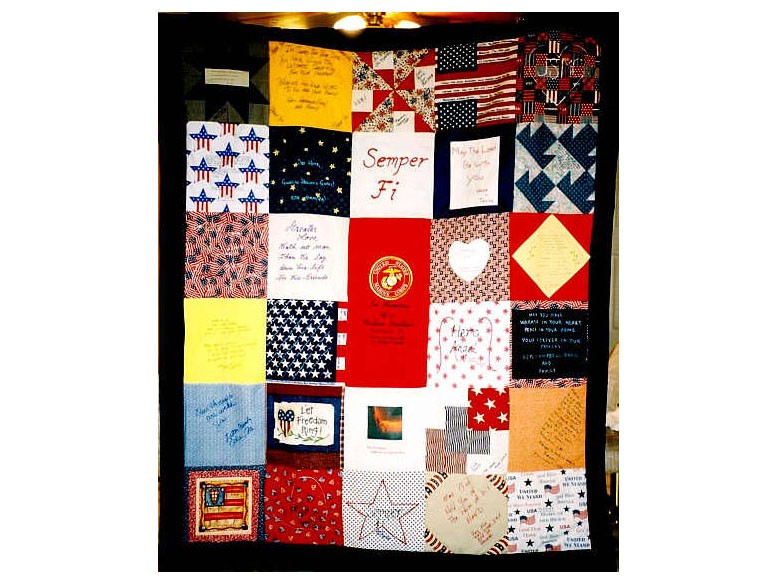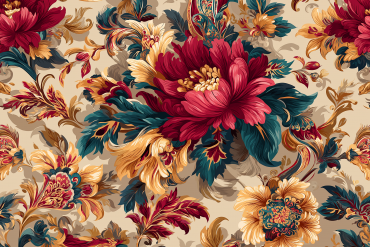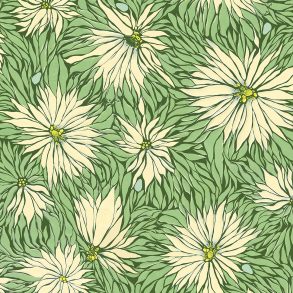Welcome to Part Five (Quilting for Change) of this series brought to us by Molly Williams. Over the next six weeks Molly will explore the people, politics, patterns and processes that informed the development of the American quilt. She will take us from early African-American quilts to the 21st Century Art quilts that we see today.
Quilting for Change
In the America, the 1960’s were revolutionary times. The civil rights and feminist movements were changing all facets of society, including the art and quilting worlds. A key leader in this movement was Faith Ringgold, an African-American artist renowned for her painted story quilts. Ringgold’s work reflects both her passion for the African American civil rights movement and her commitment to feminist issues. The colorful quilt seen below, top-left, depicts eight African American women freedom fighters: Madame C.J. Walker, Sojourner Truth, Ida B. Wells, Fannie Lou Hamer, Harriet Tubman, Rosa Parks , Mary McLeod Bethune, Ella Baker and Vincent van Gogh. Mother’s quilt, bottom-middle, was Ringgold’s first quilted painting, which combines paint with fabrics, a central painting bordered by the text of the story then an outer border of pieced fabrics.
Another movement in America centered around American Gay Rights. At the height of the movement AIDS struck the community, killing 60 Americans in 1980 and by 1985 AIDS deaths had risen to 3,000, with the number of cases doubling every 6 months. The ‘Names Project’ quilt started in 1987 when gay rights activist Cleve Jones made a quilt in memory of his best friend. The quilt is made of thousands of individual memory quilts each measuring three feet by six feet – the size of a grave. On October 11, 1987, the quilt was displayed on the National Mall in Washington, D.C. – It covered a space larger than a football field and included 1,920 panels. Today the quilt weighs 54 tons and is composed of more than 47,000 panels
Quilts continue to be used to record historical moments and comfort those faced with immense challenges in American society. Currently, there are three groups making memorial quilts for fallen military personnel in Iraq and Afghanistan. One is the Marine Comfort Quilt Project. On March 23 2003, Jan Lang and her husband were given the news that their son, serving with the 1st Battalion 2nd Marines Charlie Company, was missing in action in Iraq. Twenty four hours later they learned that he had survived the attack but that 18 of his fellow Marines had not. Hugely elated and wondering why they had been so fortunate, Jan sought a way to reach out to the bereaved families. She decided to make a comfort quilt for each of family and the project has grown to encompass all the US military services active in the Middle East. ‘Each quilt is made of 12.5 x 12.5- inch blocks with a message written on each square. Each square delivers a message of love and comfort to those families so they know that their soldier is not forgotten’.












